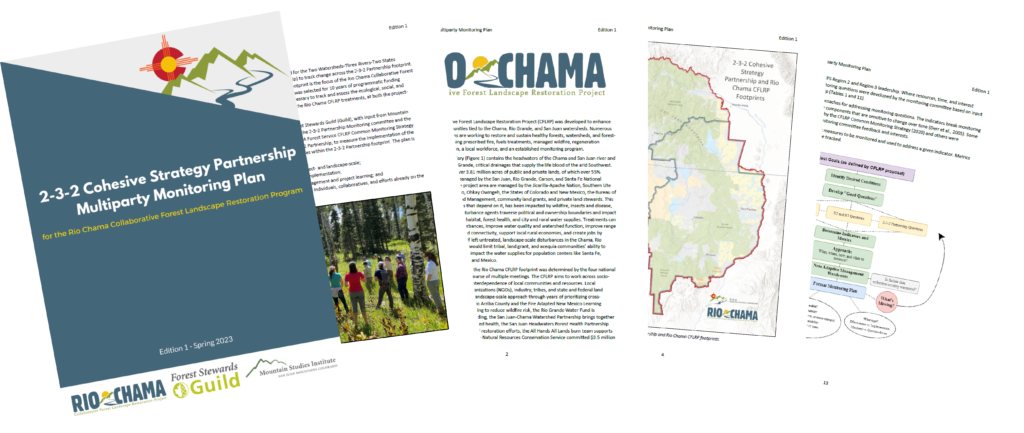Monitoring and Reports
These are monitoring results for the questions within the monitoring plan for 2023. They are shown in monitoring “leaflets” with key highlights:
- How are the benefits of restoration activities distributed amongst communities adjacent to the project boundary?
- If and to what extent has CFLRP investments attracted partner investments across the landscape?
- How do treatments alter the density and distribution of large trees, snags, and coarse woody debris?
- Did CFLRP increase economic utilization of restoration by-products?
- How well is CFLRP encouraging an effective and meaningful collaborative approach?
- What is the reduction in fuel hazard based on our treatments?
- How did CFLRP support fuelwood programs in the project landscape?
- What is the trend in invasive species within the CFLRP project area?
- How have CFLRP activities supported local jobs and labor income?
- How do sales, contracts, and agreements associated with the CFLRP affect local communities?
- What is the effect of treatments on the presence of forest pests and disease?
- Have project treatments changed the net risk of fire to communities and water resources over time?
- How has the social and economic context changed, if at all, from the beginning of CFLRP to the end?
- How do CFLRP activities affect carbon carrying capacity over time?
- What is the effect of the treatments on moving the forest landscape toward a more sustainable condition that includes scale and intensity of historical disturbances?
- How does the identification process of focal watersheds guide treatment locations and implementation processes that account for and support traditional use of fire and traditional forest use, including access to medicinal, food, heating, building materials, and/or archeological and extant cultural sites?
- How has the CFLRP affected acceptance of forest treatments, including prescribed fire amongst partners?
- What is the status and trend of watershed conditions in the CFLR area, with a focus on the physical and biological conditions that support key soil, hydrologic and aquatic ecosystem processes?
- What are the specific effects of restoration treatments on the habitat of at-risk species and/or the habitat of species of collaborative concern across the CFLR project area?
- What are the specific effects of restoration treatments on populations of species of collaborative concern across the CFLR project area?
- Did CFLRP maintain or increase the number and/or diversity of wood products that can be processed locally?
- How are CFLRP activities supporting jobs and labor income for youth, minority group representatives, or people from low-income communities?
2023 Collaborative Survey by Colorado Forest Restoration Institute:
Previous collaborative 2-3-2 surveys
What does monitoring mean?
Any project can and should have an element of monitoring, which essentially means keeping track of different stages and results of any action (or inaction). Broadly, the process includes implementation, effectiveness, and ecological monitoring. Implementation monitoring asks if the action occurred in the way it was designed or contracted. Effectiveness monitoring looks at the action’s broad results and how they match expectations. Ecological monitoring explores topics more in depth, often requiring research and extended periods of time.
While these monitoring elements are a helpful start, we aim to expand what can be monitored by including socio-economics (local economies, mills, industry, etc.), environmental justice, bees, spillover effects on neighboring areas, outreach and education, and more. You can also read our blog where we dive even deeper into the idea of monitoring.

